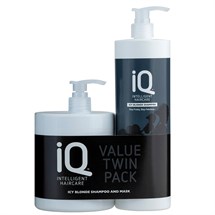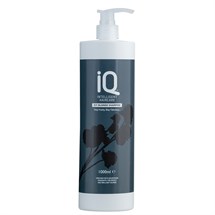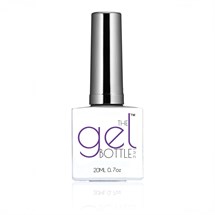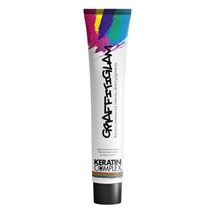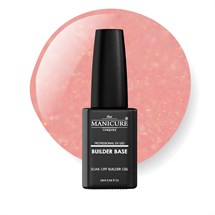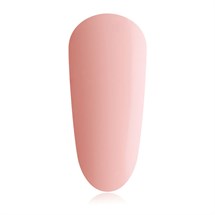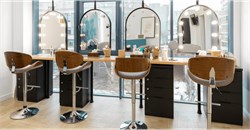Menu

The importance of a good consultation
Client consultations are not only a legal requirement before treatment, but also an opportunity to discover what your client wants, along with possible contraindications, and achieve the perfect end result. Even regular clients need a consultation as hair, nails and skin condition can change over time. Read on to learn how to get the most from each consultation.

Questions
Ask questions and listen carefully to ensure you understand the client’s desires and requirements. Use open questions that require more than a yes or no answer. Give the client confidence that you are dedicated to giving them a fantastic service and make recommendations accordingly. Repeat key information back to the client. For example, showing them how much hair you will cut. Before you start working on the client, always check they have no more questions.
Analyse
Check over the area you will be performing the treatment on, such as hair, skin or nails. Tailor your ideas to their specific desire, concern or problem. Discuss findings with the client and, again, make recommendations.
Keep a Record
Recording information about each of your clients allows you to build a deeper understanding of their needs. Record information from consultations. Should their regular hairdresser or therapist be away, someone else can read their record to familiarise themselves with the client. Allergies, conditions and sensitivities must be noted. Keeping records up to date also allows you to identify other treatments or retail products that clients may be interested in.
Inspiration
Have hair or beauty magazines and pictures of your work available for the client to look through. Also, direct them to Instagram and Pinterest for further inspiration on current looks and trends. This may help clients who lack confidence or are unsure about the look they want. Use the client’s language, not industry jargon they may not understand.
Building Relationships
Consultations offer hair and beauty professionals a chance to develop a rapport with clients. Be positive and friendly from the start, putting the client at ease. Be aware of your body language, sit at their level, smile and avoid folding your arms. Get to know your clients - Every client is different; some will have very strong views of what they want, others will be looking for inspiration and suggestions. Some may prefer a questionnaire, other may prefer only face-to-face questions. Read their records to remind yourself of key information and previous treatments before the client returns for their next appointment.
Confidentiality
Be aware that the client has trusted you with private, often sensitive, information. Store carefully and adhere to the Data Protection Act.
Meet Clients Expectations
Clients will be seeking expert advice from a professional they can trust. Give them tailored ideas and tips to suit their skin tone, hair colour, condition, face shape etc. Manage their expectations. Ask them questions about their job, hobbies and family life. Would a high maintenance hairstyle fit in with your client’s lifestyle? Read their body language. Are they saying yes but shrugging their shoulders or seeming non-committal? Politely check and double check what they want. Also, discuss after care and retail products.
Opportunities to Upsell
Don’t be afraid to suggest additional services or ancillary products to clients during the consultation.If they are in for a manicure, you could discuss gel polish or nail art. If they are in for a cut and re-style, you could discuss colour options. If they decide upon your upsell, make sure they are aware of and happy about the cost.
Retail
Establish what your client’s concerns or problems are with, for example, their hair, skin or nails. Suggest retail products they might like that could help with after care.
Complaints
If your client returns to you unhappy after the treatment, the consultation form can provide a handy paper trail for you to check what was discussed and agreed, as well as any existing allergies or conditions. Read our blog on How To Deal With Client Complaints.
Imagery sourced from Pinterest.
New & Trending
NEW
NEW
NEW
NEW
Delivery
Collection
Please login to your account to check stock in your local store.
NEW
NEW
NEW
NEW
Delivery
Collection
Please login to your account to check stock in your local store.
NEW
Freelance Focus
Freelance Focus, is a one stop resource for anyone working as a freelancer or thinking of going freelance in the hair & beauty industry, which includes a FREE downloadable guide filled with advice, useful insights, experiences and tips (from experienced freelancers) to help you understand the steps needed to make the right choices for you.
Back to Posts
Tags
- 2024
- acne
- allergies
- apps
- autumn
- awards
- balayage
- blonde
- braids
- bridal
- brows
- business
- capital & me
- care
- career
- celebrities
- christmas
- chrome
- clean
- collection
- color wow
- colour
- conditioner
- covid-19
- crazy color
- curls
- facial
- fanola
- fashion
- festival
- finance
- floral
- freelance
- gel
- gellux
- get the look
- goldwell
- hair
- halloween
- indola
- interview
- k18
- lashbase
- lashes
- loreal
- loyalty
- make up
- manicure
- marketing
- men
- mens
- mental health
- microblading
- milk_shake
- nail art
- nail trends
- nailart
- nails
- new years
- nioxin
- nxt
- olaplex
- opi
- party
- pedicure
- ponytail
- pulp riot
- redken
- retail
- salon furniture
- salon system
- schwarzkopf
- self-employed
- shampoo
- skincare
- smoothing
- social media
- split-ends
- spring
- step by step
- summer
- sustainability
- tanning
- the met gala
- tigi
- tiktok
- toner
- toning
- top knot
- trends
- tutorial
- updo
- valentines
- veganuary
- wahl
- waxing
- wella
- wellbeing
- winter
Latest Posts
- How to Manage Your Stress for Stress Awareness Month (and Beyond)
- Bridal Hair & Beauty Secrets: Expert Tips from the Duo Behind ‘Bridezilla’
- Week In My Shoes: A Day In The Life Of Shenique Dawkins
- Introducing New Goldwell Light Dimensions SilkLift
- Butter Yellow Is the Colour of the Season
- Vitamino Color Spectrum - Lock In Your Day 1 Colour Vibrancy For Up To 100 Days*
- Week in My Shoes: A Day in the Life of Craig Purves
- Embracing Grey: Expert Tips on Perfecting the Grey Hair Blend Trend
- How to Raise Beauty Prices Without Losing Clients
- Billie Eilish’s Jellyfish Haircut: The Trend Taking Over Salons
Related Posts
How to Raise Beauty Prices Without Losing Clients
Discover why increasing your prices is essential and how to approach it without losing the trust of your clients.
The true cost of beauty - 80% of Brits admit to spending £1200 on beauty treatments per year
We did some digging to reveal the true cost of beauty, and what we found may shock you! A whopping 80% of Brits admit to spending £1200 a year.
The UK cities with the most top - rated hair & beauty professionals
We explore what drives consumers to leave positive reviews online for their hair and beauty professionals, and reveal the UK cities where salons and freelancers have received the most favourable reviews.
Staying Organised with Apps and Online Services in 2023
While starting your own business can feel like an endless list of tasks there is so much you can do via your phone and a variety of apps.
Harnessing the Power of Social Media in 2023
When it comes to being a hair or beauty pro – freelance or salon-based – social media offers your clients a window into your creations, how you work and how popular you are.
How to set up your at-home salon
There are various ways you can go freelance; while some hair and beauty pros prefer to rent a chair or space in an existing salon, others love the freedom and flexibility of creating their own at-home workspace.
Getting and Retaining Clients as a Freelancer in 2023
Starting your own business can definitely be daunting, but once you’ve got your clientele sorted, you’re halfway there! Here we break down some useful tips to getting and retaining your clients.
Pricing Your Services as a Freelancer in 2023
Deciding on your costs can be one of those super difficult decisions that you’d rather not deal with. However, it is an important step, so make sure you do your research. Here are some tips to help make the process that little bit less painful.
